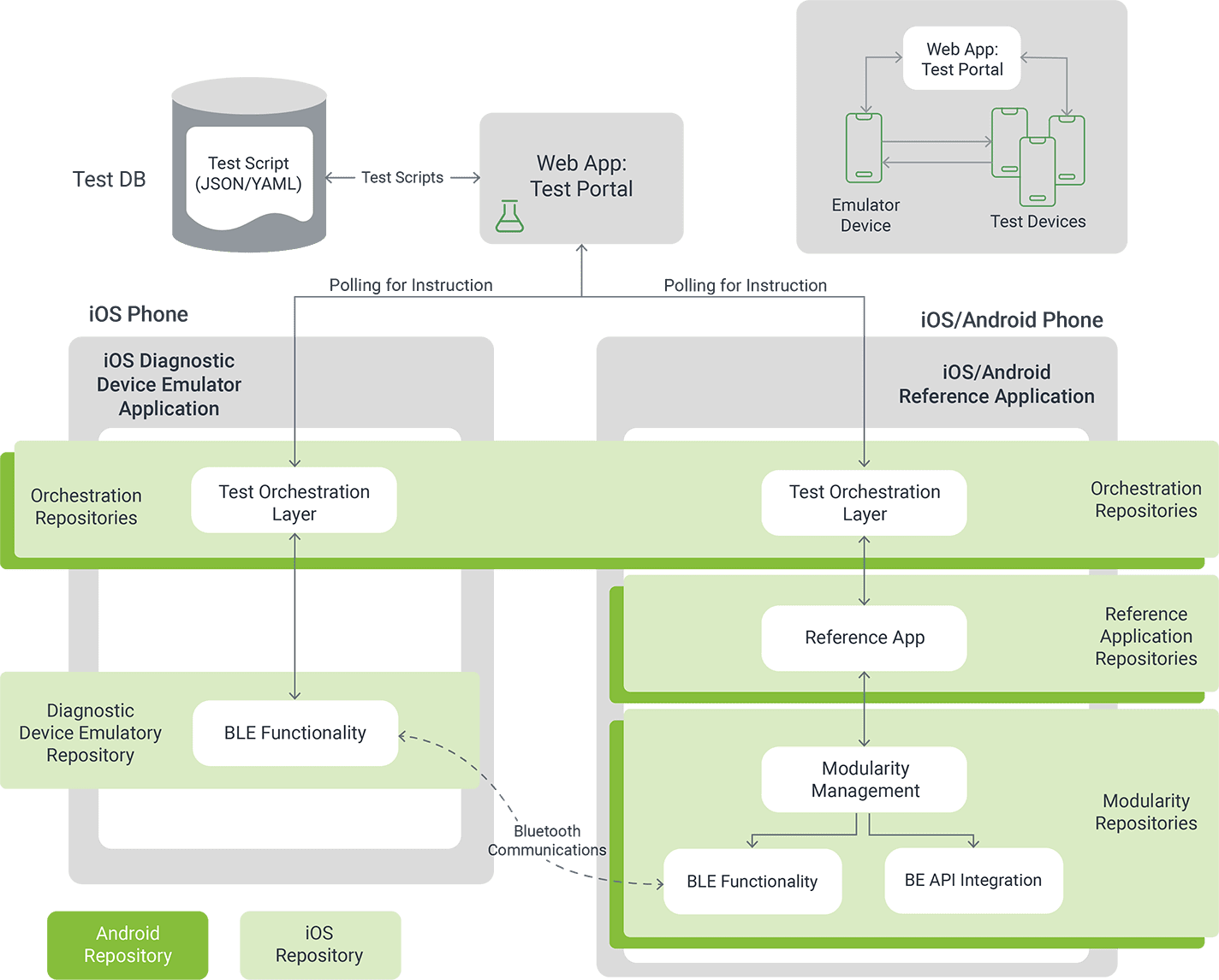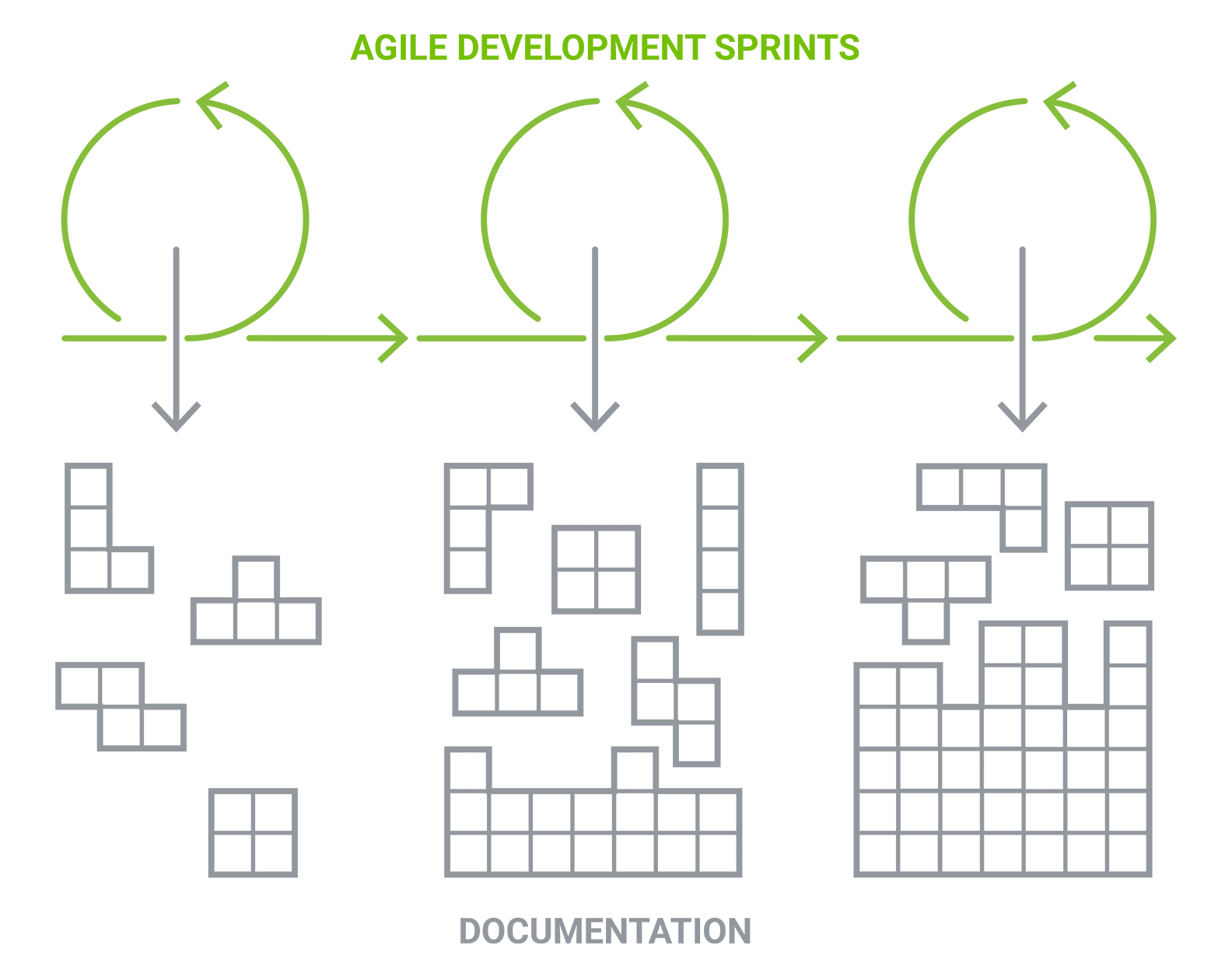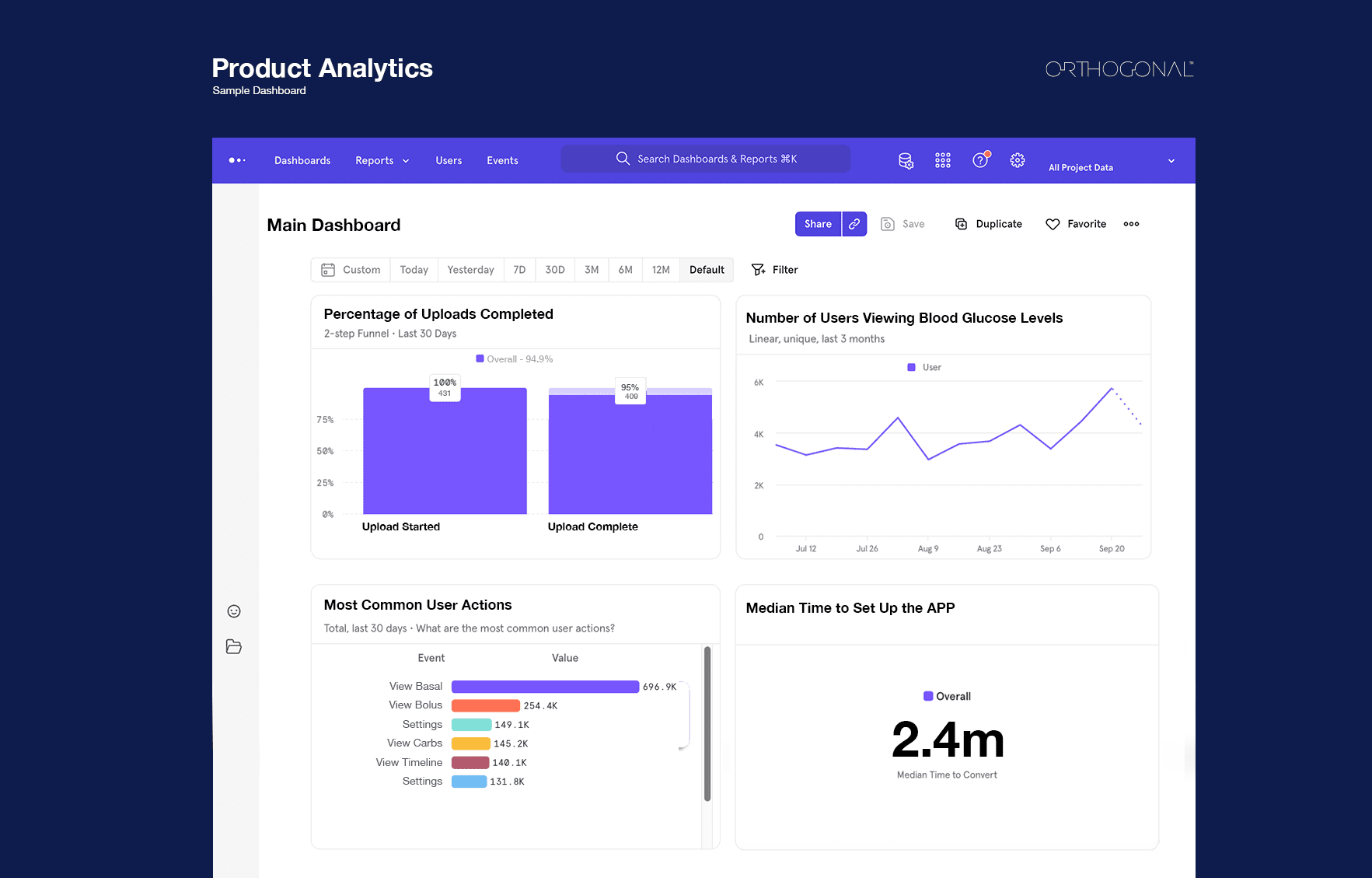Testing Automation
Assuring Software Verification & Validation in the Face of Change
Automating functional and integration testing and verification documentation enables testing and monitoring of SaMD at scale, across mobile, cloud and integrated device platforms, to increase assurance and decrease cost and timelines.

TDD & BDD
Test early, test often.
Orthogonal employs Test-driven development (TDD) and Behavior-driven design (BDD), Agile methodologies that emphasize frequent automated testing, in our SaMD development. With TDD, we automatically test code every time it’s committed, letting us catch and identify bugs early on and preventing a cascade of hidden issues arising at the end of development. For BDD, writing testing acceptance criteria for user stories in Gherkin kicks off a chain of automation, resulting in easily traceable requirements, acceptance tests and automated documentation of our verification work.

Verification Automation
Leveraging our eQMS to make verification work smarter.
Verification Automation leverages our eQMS, built on top of Jira and Confluence, to automate the documentation of verification protocols. This allows us to accomplish informal verification throughout the development process, resulting in surprise-free, seamless formal testing. It also allows us to release software more quickly by speeding the formal verification process, so it can be done in hours, not weeks.

Testing Automation for BYOD
Validating software across thousands of device profiles.
As the smartphone market is constantly changing, with the majority of U.S. consumers replacing their smartphones within two to three years, developers need the means for both appropriate testing pre-launch and in-market monitoring. Orthogonal has built out frameworks that allow us to test SaMD and connected device solutions on the most representative hardware and OS combinations. Through the use of testing farms, harnesses and our test management platform, we can assure safety and effectiveness across thousands of device profiles.

Product Analytics
An early warning system for post-market issues.
Product Analytics (PA) provides real-world quantitative data on SaMD post-release, keeping developers in the know on changes and issues that spring up in the market. PA can flag if a certain smartphone and OS combination is causing issues, giving us the opportunity to work on mitigation. This early warning system makes our SaMD adaptable to changes in the smartphone market as well as accessible to the maximum number of devices.

Field-Level Self Validation
A final self-check for apps on the market.
When a SaMD app is loaded onto a new device profile it hasn’t been tested on – especially for SaMD that uses Bluetooth and Near Field Communication – extra precaution are taken to assure a validated system. A field-level self validation test is a final check for our SaMD apps. A positive result allows user access to the app; a negative will safeguard the app from being run in an unsuitable environment. This allows our apps to keep up with changes in consumer technology, only operating where we can guarantee their safety and effectiveness.

Software Assurance for Cloud
Rethinking validation for shared responsibility environments.
The cloud provides incredible power and scalability to SaMD solutions. It’s also a platform where developers don’t have full control over our software. In order to responsibly use the cloud for hosting SaMD, we need to embrace a methodology of intermittent validation. Appropriate testing and test automation helps identify triggers that could lead to changes in the cloud environment, giving developers a heads up on what to monitor and when.
